Your cart is currently empty!
Month: July 2024
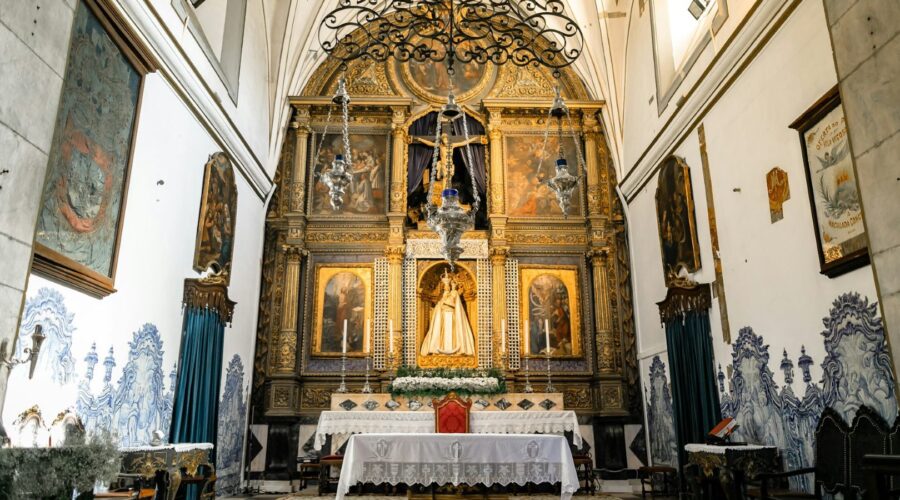
St John the Baptist Catholic Church: A Haven of Faith and Community
About St John the Baptist Catholic Church
Nestled in the heart of the vibrant city, St John the Baptist Catholic Church has been a beacon of faith, fellowship, and service for centuries. Its rich history, architectural beauty, and vibrant community make it a cornerstone of the Catholic faith in the region.
Official Website
Tel: (555) 123-4567
Email: [email protected]
History and Heritage
St John the Baptist Catholic Church traces its roots back to the early 19th century. The original parish was founded in 1810 by a small group of Catholic settlers. As the community grew, so did the need for a larger and more permanent church.
In 1850, the cornerstone of the current church was laid. The Gothic Revival-style building was designed by renowned architect Patrick Keely and completed in 1854. Its intricate stone carvings, soaring spires, and stained-glass windows are a testament to the craftsmanship and devotion of its builders.
Architectural Splendor
- Gothic Revival Style: The church is a prime example of Gothic Revival architecture, characterized by its pointed arches, ribbed vaults, and flying buttresses.
- Stone Facade: The exterior is adorned with intricate stone carvings, depicting biblical scenes and saints.
- Stained-Glass Windows: The vibrant stained-glass windows depict the life of Jesus Christ and various saints.
- Spacious Interior: The grand interior features a nave, side aisles, and a vaulted ceiling, creating an awe-inspiring space for worship.
Vibrant Community
St John the Baptist Catholic Church is more than just a historical landmark; it is a thriving community of faith. The parish offers a wide range of programs and ministries to meet the spiritual, social, and educational needs of its members.
- Mass Schedule: The church offers daily and weekend Masses at various times.
- Sacraments: The sacraments of Baptism, Confirmation, Eucharist, Reconciliation, and Anointing of the Sick are administered.
- Ministries: The parish has numerous ministries, including adult education, youth groups, choir, and outreach programs.
- Events: The church hosts various events throughout the year, such as festivals, fundraisers, and retreats.
Service to the Community
St John the Baptist Catholic Church is deeply committed to serving the wider community. It operates a food pantry, provides financial assistance to those in need, and offers counseling and support services. The church also collaborates with other organizations to address social issues such as homelessness and hunger.
Visiting the Church
Whether you are a Catholic faithful or simply appreciate architectural beauty, visiting St John the Baptist Catholic Church is a worthwhile experience.
Google Maps DirectionsParking
The church provides limited on-site parking. Additional parking is available in nearby parking garages.
Accessibility
The church is wheelchair accessible and provides assisted listening devices.
Hours of Operation
The church is open daily from 8:00 AM to 5:00 PM.
Conclusion
St John the Baptist Catholic Church is a true testament to the enduring power of faith and the transformative impact of community. Its rich history, architectural splendor, and vibrant community make it a treasured landmark that continues to inspire and uplift generations. Whether you are seeking spiritual fulfillment, architectural appreciation, or community involvement, St John the Baptist Catholic Church welcomes you with open arms.
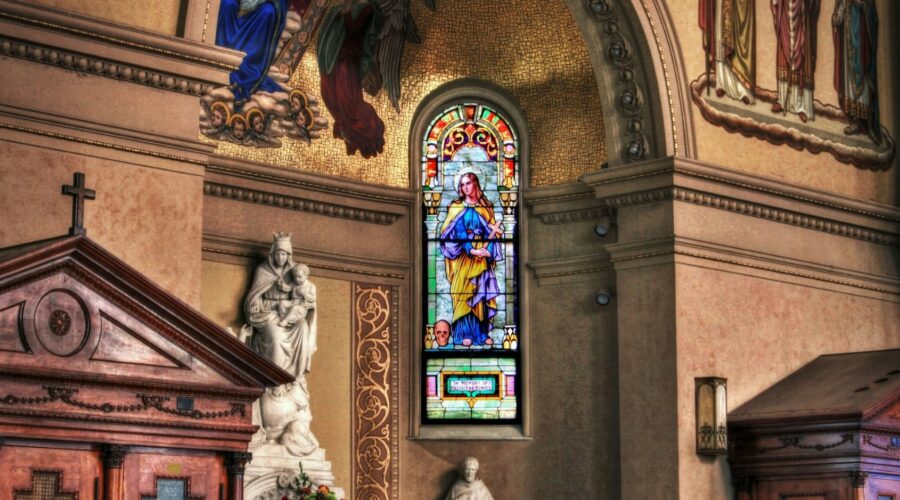
Discover Trinity Methodist Church: A Beacon of Faith and Community
Introduction
Trinity Methodist Church stands as a testament to the unwavering spirit of faith and the power of community. With a rich history spanning over a century, the church has played a pivotal role in shaping the spiritual and social landscape of its surrounding area. This comprehensive guide will delve into the captivating story of Trinity Methodist Church, exploring its origins, core values, engaging ministries, and enduring legacy.
A Legacy of Faith and Service
Establishment and Early History
Trinity Methodist Church was founded in 1894 by a group of dedicated Methodists seeking to establish a spiritual haven in the heart of the community. As the church grew, it became a vibrant hub for worship, fellowship, and service.
Historic Significance
The church’s historic sanctuary, built in 1910, is a stunning example of Victorian architecture. Its stained-glass windows, intricate carvings, and soaring ceilings evoke a sense of reverence and awe, creating a sacred space that has witnessed countless moments of worship and spiritual growth.
Core Values and Beliefs
At the core of Trinity Methodist Church’s identity lies a steadfast commitment to the following values:
Centered on Christ
The church is centered on the life and teachings of Jesus Christ. Its members strive to embody His love, compassion, and unwavering hope in all aspects of their lives.
Biblical Foundation
The Bible is the authoritative guide for faith and practice at Trinity Methodist Church. Its teachings are studied, interpreted, and applied to daily life, shaping the church’s beliefs and guiding its ministries.
Outward Focused
The church believes that faith is not confined within its walls but should be shared with the wider community and the world. Trinity Methodist Church is actively involved in outreach programs and mission trips, extending God’s love and support to those in need.
Engaging Ministries
Worship Services
Trinity Methodist Church offers a variety of worship services throughout the week, including traditional, contemporary, and family-friendly options. Each service features inspiring music, engaging sermons, and opportunities for prayer and reflection.
Sunday School and Bible Study
The church provides a comprehensive Sunday School program for all ages, from infants to adults. These classes offer in-depth study of the Bible, fostering spiritual growth and understanding.
Youth and Children’s Ministries
Trinity Methodist Church has a vibrant youth group and a dynamic children’s ministry. These programs are designed to nurture the faith of children and youth, equipping them to become active and engaged members of the Christian community.
Missions and Outreach
The church is committed to serving the local community and beyond through various missions and outreach programs. These initiatives include providing food assistance, supporting local schools, and organizing fundraisers for those in need.
Enduring Legacy
Throughout its long and remarkable history, Trinity Methodist Church has left an enduring legacy on its community and beyond:
Community Landmark
The church has become a beloved landmark, serving as a gathering place for celebrations, memorials, and community events. Its sanctuary has witnessed countless weddings, baptisms, and other significant life milestones.
Spiritual Growth and Nurture
The church has been a cornerstone of spiritual growth and nurture for generations of families. Its pastors, teachers, and lay leaders have dedicated themselves to guiding individuals on their faith journeys.
Social Impact
Trinity Methodist Church has made a significant impact on the social fabric of its community. Its outreach programs have provided support and assistance to countless individuals in need, fostering a spirit of compassion and service.
Conclusion
Trinity Methodist Church stands as a testament to the unwavering power of faith and the enduring strength of community. Through its rich history, core values, engaging ministries, and lasting legacy, the church continues to inspire and uplift its members and the surrounding community. Whether you are seeking a spiritual home, a place to serve, or simply a place to connect with others, Trinity Methodist Church welcomes you with open arms.
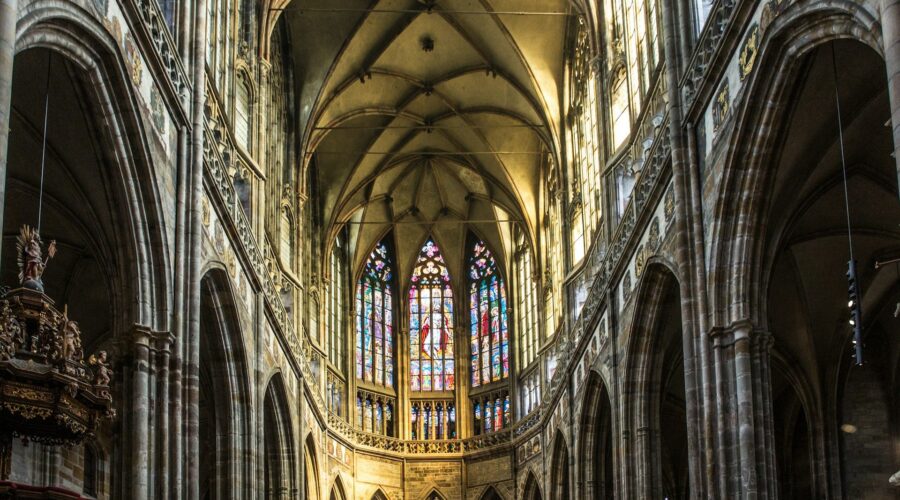
St. Benedict Church: A Historical and Architectural Gem
Introduction
Nestled in the heart of a bustling city, St. Benedict Church stands as a beacon of faith and architectural splendor. Its intricate carvings, soaring spires, and rich history captivate visitors from far and wide. Delving into the annals of this sacred edifice, we embark on a journey to uncover its timeless significance.
Architectural Marvel
Gothic Revival Masterpiece
St. Benedict Church exemplifies the Gothic Revival style, characterized by its pointed arches, ribbed vaults, and ornate tracery. The intricate facade, adorned with intricate carvings and stained glass windows, invites visitors into a realm of awe and wonder.
Soaring Spires
Two towering spires pierce the sky, reaching an impressive height that commands attention from all corners. Intricate turrets and pinnacles adorn their summits, creating a breathtaking silhouette against the cityscape.
Captivating Interior
Stepping inside the church, one is greeted by a serene and ethereal atmosphere. Vaulted ceilings soar overhead, supported by slender columns that seem to evaporate into the twilight. The nave, adorned with elaborate stained glass windows, casts a kaleidoscope of colors upon the interior.
Historical Significance
A Symbol of Faith
St. Benedict Church traces its roots back to the late 19th century, when a burgeoning Catholic community yearned for a permanent place of worship. The parish was founded under the patronage of Saint Benedict, a renowned monk and founder of the Benedictine Order.
Community Center
Beyond its religious significance, St. Benedict Church served as a vital community center. It hosted social gatherings, educational programs, and charitable initiatives, fostering a strong sense of belonging among its parishioners.
Enduring Legacy
Today, St. Benedict Church remains a beloved landmark, not only for its architectural beauty but also for its enduring legacy as a spiritual and social gathering place.
Restoration and Preservation
Over the years, St. Benedict Church has undergone extensive restoration efforts to preserve its historical integrity. Preservationists have painstakingly restored the intricate carvings, stained glass windows, and vaulted ceilings, ensuring that future generations can appreciate its architectural splendor.
Visiting St. Benedict Church
If you find yourself in the vicinity of this architectural and religious gem, consider planning a visit. Here are some tips to enhance your experience:
Guided Tours
Guided tours are available at specific times, providing an in-depth look into the church’s history, architecture, and artwork.
Worship Services
Attend a worship service to immerse yourself in the spiritual ambiance of the church and witness its vibrant community.
Admire the Stained Glass Windows
Dedicate time to admire the exquisite stained glass windows that adorn the nave and chancel. Their vibrant colors and intricate designs tell biblical stories and evoke a sense of awe and wonder.
Explore the Grounds
Take a stroll around the church grounds to discover its tranquil gardens and serene courtyards. Reflect on the church’s history and its enduring presence in the community.
Conclusion
St. Benedict Church stands as a testament to the enduring power of faith, architectural brilliance, and community spirit. Its soaring spires, intricate carvings, and rich history have captivated generations, making it a beloved and iconic landmark. Whether you seek spiritual solace, architectural inspiration, or a glimpse into the past, St. Benedict Church beckons you to experience its timeless beauty and enduring legacy.
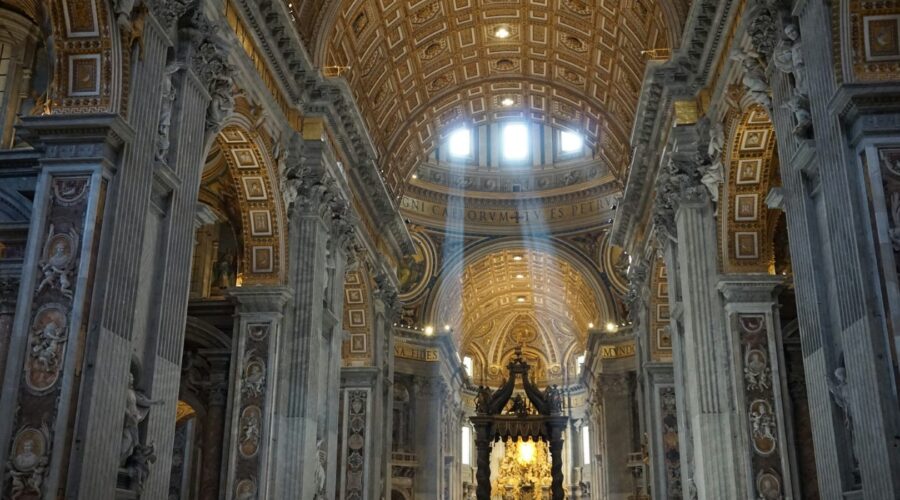
The Remnant Church: A Comprehensive Guide
Introduction
The concept of a remnant church has been a topic of theological debate and interpretation for centuries. In this comprehensive guide, we will explore the biblical roots of the remnant church, examine its characteristics, and discuss its significance in modern times.
Biblical Roots of the Remnant Church
Old Testament Roots
The concept of a remnant can be traced back to the Old Testament. After the Israelites’ repeated disobedience and idolatry, God often sent judgment upon them, leaving only a small faithful remnant to carry on His covenant.
For example, in Isaiah 1:9, God says, “Unless the Lord of hosts had left us a few survivors, we would have become like Sodom, and we would have been made like Gomorrah.”
New Testament Roots
In the New Testament, Jesus and the apostles continued to use the term “remnant” to describe those who remained faithful to God’s covenant.
In Romans 11:5, Paul writes, “So too, at the present time there is a remnant, chosen by grace.”
Characteristics of the Remnant Church
Faithfulness to God
The remnant church is characterized by its unwavering faithfulness to God. Its members prioritize obedience to His commandments and reject false doctrines.
Separation from the World
The remnant church is called to be separate from the world’s sinful ways. Its members avoid compromising their beliefs and strive to live in holiness.
Emphasis on Truth
The remnant church places a high value on truth and sound doctrine. Its members study the Bible diligently and are committed to upholding its teachings.
Mission-Oriented
The remnant church has a mission to proclaim the gospel and make disciples. Its members actively engage in evangelism and seek to spread the message of salvation.
Significance of the Remnant Church
Preservation of God’s Covenant
The remnant church plays a vital role in preserving God’s covenant with His people. Through their faithfulness, they ensure that His purposes and plans will continue to be fulfilled.
Witness to the World
The remnant church serves as a witness to the world of God’s grace and faithfulness. Their lives demonstrate the transformative power of the gospel and inspire others to seek salvation.
Preparation for the End Times
According to some end-time prophecies, the remnant church will play a significant role in the events leading up to Christ’s return. They will endure persecution and hardship while remaining faithful to their calling.
Applying the Remnant Church Concept
Self-Examination
Regularly evaluate your own beliefs and practices to ensure that you are living in alignment with the characteristics of the remnant church.
Community Engagement
Connect with other believers who share your values and commit to supporting each other in your journey of faithfulness.
Prayer and Study
Spend time in prayer and Bible study to deepen your understanding of God’s Word and align your life with His purposes.
Conclusion
The remnant church is a biblical concept that emphasizes the importance of faithfulness, separation, and mission. By understanding its roots and characteristics, we can strive to be part of this chosen group and play our role in preserving God’s covenant, witnessing to the world, and preparing for the end times.
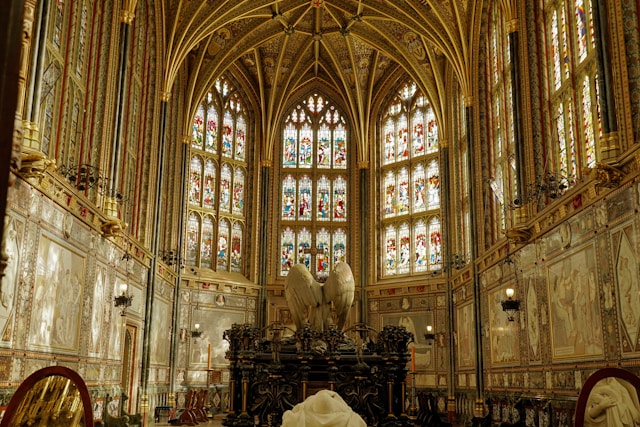
Discover the Spiritual Haven: St. Francis de Sales Catholic Church
A Historical and Spiritual Journey
St. Francis de Sales Catholic Church, nestled in the heart of Sherman Oaks, California, is a testament to faith, community, and architectural beauty. Its rich history, vibrant present, and promising future have made it a beloved destination for Catholics and visitors alike.
Humble Beginnings and Growth
The roots of St. Francis de Sales Catholic Church can be traced back to 1932 when a small group of Catholics gathered in a rented house for Sunday Mass. As the community grew, so did the need for a permanent home. In 1952, under the guidance of Father John P. Bradley, the first church building was constructed.
Over the years, the parish has experienced tremendous growth and expansion. In the 1960s, a new school building was added, followed by a larger worship space in 1989. The current church, a magnificent structure with soaring ceilings and stained glass windows, was completed in 2001.
Architectural Splendor
St. Francis de Sales Catholic Church is an architectural masterpiece that reflects the grandeur of the Catholic faith. Designed in a Romanesque Revival style, the church features a symmetrical façade, arched windows, and a prominent bell tower.
The interior of the church is equally impressive. The nave is lined with rows of pews, while the sanctuary is adorned with a stunning mosaic depicting scenes from the life of St. Francis de Sales. The altar, made of Italian marble, is a focal point of the worship space.
Vibrant Parish Life
Beyond its architectural beauty, St. Francis de Sales Catholic Church is known for its active and engaged parish community. The church offers a wide range of programs and ministries for all ages, including:
- Religious education programs for children, youth, and adults
- Liturgical ministries such as choir, lectoring, and altar serving
- Community service initiatives focused on social justice and outreach
- Social events and gatherings for fellowship and community building
Pastoral Care and Service
The priests and staff of St. Francis de Sales Catholic Church are dedicated to providing pastoral care and guidance to the community. They offer regular confessions, counseling, and prayer services. The church also operates a food pantry and provides other forms of assistance to those in need.
Community Engagement
St. Francis de Sales Catholic Church plays an active role in the broader community of Sherman Oaks. The church hosts events such as concerts, festivals, and educational programs that are open to the public. It also collaborates with local organizations to address community needs and promote social well-being.
Upcoming Events and Services
St. Francis de Sales Catholic Church offers a variety of upcoming events and services, including:
- Weekly Mass schedule (visit the website for specific times)
- Reconciliation (Confession) on Fridays at 5:00 PM
- Eucharistic Adoration on Thursdays at 7:00 PM
- Parish Festival (annual event held in May)
- Community Outreach Day (scheduled in collaboration with local organizations)
Contact and Location
St. Francis de Sales Catholic Church is located at 16223 Vanowen Street, Sherman Oaks, CA 91406. For more information or to contact the parish office, please visit their website: www.stfrancisdesales.org
St. Francis de Sales Catholic Church is a vibrant and welcoming community of faith that offers spiritual nourishment, architectural beauty, and community engagement. Whether you are a lifelong Catholic or seeking a new spiritual home, you are invited to step inside and experience the transformative power of God’s love.
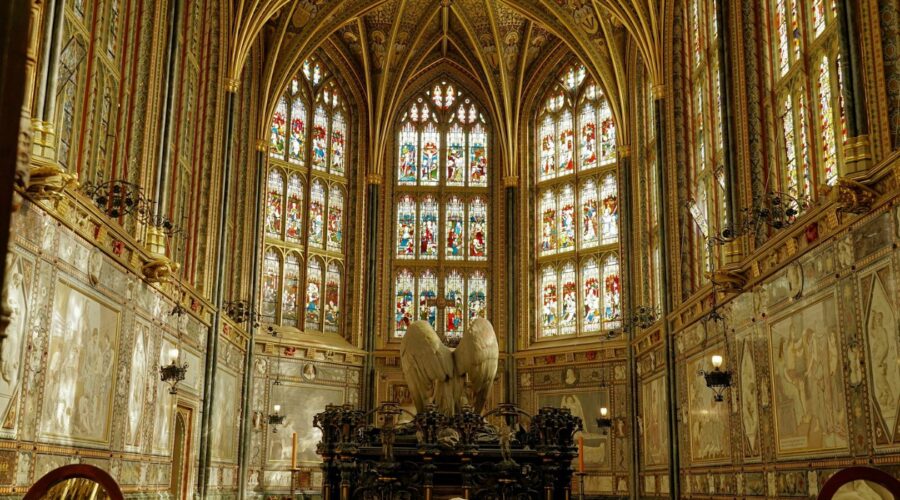
Unlock the Doors to Spiritual Connection: Your Guide to Visitation Churches
Introduction
In today’s fast-paced world, it can be challenging to find a sense of community and spiritual connection. Visitation churches present a unique opportunity to experience a different type of worship. If you’re looking for a welcoming and supportive environment to deepen your faith, consider exploring a visitation church.
What is a Visitation Church?
A visitation church is a congregation that conducts worship services at the homes of its members. This decentralized approach fosters a sense of intimacy and fellowship that is often missing in larger, traditional churches.
Benefits of Attending a Visitation Church
There are numerous benefits to attending a visitation church, including:
- Intimate and personalized worship: Small group gatherings allow for more meaningful interactions and personalized care.
- Flexible schedules: Services are often held at convenient times and locations that accommodate busy lifestyles.
- Community and fellowship: Regular home visits foster a strong sense of community and support.
- Spiritual growth: Close relationships with fellow members and the pastor provide opportunities for mentorship and growth.
How to Find a Visitation Church
Finding a visitation church in your area is easy. Consider the following steps:
- Online search: Use search engines or directories to find visitation churches near you.
- Church directories: Contact local churches and ask if they offer visitation services.
- Word-of-mouth: Inquire with friends, family, or colleagues who may have experience with visitation churches.
What to Expect at a Visitation Church Service
Visitation church services typically follow a structured format:
Pre-Service Fellowship
Prior to the service, members gather for refreshments and socialization, fostering a warm and welcoming atmosphere.
Worship and Bible Study
The service includes a mix of worship songs, Bible study, and prayer. Discussions are often more interactive and participatory.
Communion and Fellowship
Depending on the church’s tradition, communion may be offered. The service concludes with a time for fellowship and prayer.
Tips for Attending a Visitation Church
To ensure a fulfilling visitation church experience, consider these tips:
- Be open and welcoming: Embrace the opportunity to connect with new people and share your faith.
- Be prepared: Bring a Bible and a pen for note-taking if desired.
- Be respectful: Honor the home of the host family and follow any guidelines they may provide.
- Be involved: Participate in discussions and share your thoughts and experiences.
Conclusion
Visitation churches offer a unique and enriching faith experience that prioritizes intimacy, fellowship, and spiritual growth. If you’re seeking a deeper connection with your community and God, consider exploring a visitation church in your area. Remember, the journey of faith is a personal one, and finding the right church that aligns with your needs and beliefs is crucial.
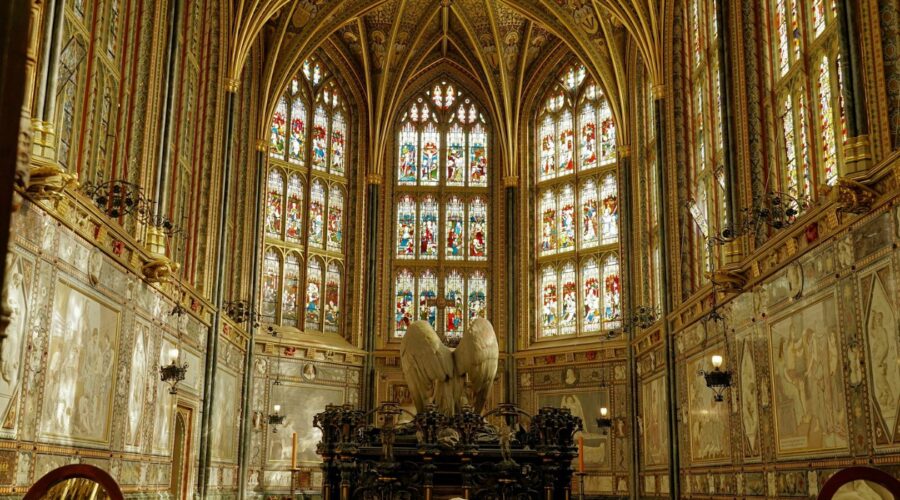
Eastern Orthodox: Exploring a Rich Christian Tradition
Introduction
The Eastern Orthodox Church, a vibrant and deeply rooted Christian tradition, has played a significant role in shaping the spiritual and cultural landscape of the world for centuries. This blog post delves into the history, beliefs, practices, and contributions of the Eastern Orthodox Church, providing an in-depth understanding of its enduring legacy.
Historical Background
Origins
The Eastern Orthodox Church traces its roots back to the early Christian communities in the Middle East. After the Great Schism of 1054, the church separated from the Roman Catholic Church and established an independent path, continuing to draw inspiration from the original teachings of Jesus Christ and the apostles.
Byzantine Empire
The Eastern Orthodox Church played a central role in the Byzantine Empire, which emerged as a major power in the Eastern Mediterranean. The church provided spiritual guidance to the empire and influenced its political, cultural, and artistic developments. The Hagia Sophia in Istanbul, once a Christian basilica and later an imperial mosque, stands as a testament to the architectural and artistic achievements of the Byzantine-Orthodox era.
Spread and Influence
Over the centuries, the Eastern Orthodox Church spread throughout Eastern Europe, including Russia, Greece, Serbia, and Romania. It also had a significant impact on the Balkans, the Caucasus, and the Middle East. Orthodox missionaries brought Christianity to these regions, shaping local cultures and traditions.
Beliefs and Practices
Core Doctrines
The Eastern Orthodox Church holds to the Nicene Creed, which affirms the divinity of Jesus Christ and the Holy Trinity. Orthodox theology emphasizes the importance of tradition, with the church viewing itself as the guardian of the original Christian teachings. The church reveres the Virgin Mary as the Theotokos (“God-bearer”) and considers her to be the holiest human being.
Liturgy and Sacraments
Eastern Orthodox worship is centered around the Divine Liturgy, a sacrament that includes the Eucharist or Holy Communion. The liturgy is typically conducted in the Old Slavonic or Greek languages and is accompanied by beautiful hymns and iconography. Other sacraments include Baptism, Chrismation, Confession, and Marriage.
Monasticism
Monasticism plays a vital role in the Eastern Orthodox Church. Monks and nuns dedicate their lives to prayer, contemplation, and service. Monasteries have been centers of spirituality, learning, and cultural preservation throughout the church’s history.
Contribution to Christianity
Ecumenical Councils
The Eastern Orthodox Church played a prominent role in the Ecumenical Councils, which established the foundational doctrines of Christianity. The councils of Nicea, Constantinople, and Chalcedon shaped the beliefs of the entire Christian world.
Iconography
Eastern Orthodox iconography is a unique artistic tradition that depicts religious figures and scenes. Icons are revered as windows into the divine and serve as aids to prayer and meditation. The use of icons has influenced Western art and aesthetics.
Slavic Christianity
The Eastern Orthodox Church played a crucial role in the Christianization of Slavic peoples. Saints Cyril and Methodius, Byzantine missionaries, developed the Slavonic alphabet, enabling the translation of the Bible and other religious texts into Slavic languages. This paved the way for the spread of Christianity throughout Eastern Europe.
Contemporary Issues
Relations with Other Christian Traditions
The Eastern Orthodox Church has a complex relationship with other Christian denominations. While there are ongoing efforts towards ecumenical dialogue, there remain theological differences that hinder full communion.
Modern Challenges
The Eastern Orthodox Church faces challenges in the contemporary world, including secularism, religious pluralism, and the need for pastoral care in a rapidly changing society. The church is adapting to these challenges while remaining faithful to its traditional teachings.
Conclusion
The Eastern Orthodox Church is a vibrant and enduring Christian tradition with a rich history and profound beliefs. Its contributions to theology, liturgy, art, and society have left an indelible mark on the world. As the church navigates contemporary challenges, it continues to inspire and guide its followers in their pursuit of spiritual growth and communion with God.
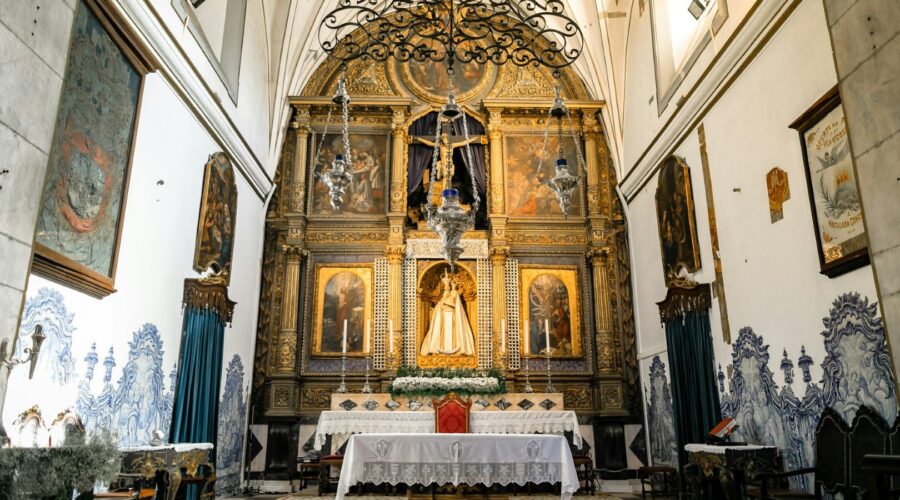
Unveiling the Enigmatic Black Nazarene: A Journey of Faith and Devotion
Origin and History
The Black Nazarene, an iconic religious artifact venerated by millions of Filipino Catholics, holds a profound place in the country’s cultural and spiritual tapestry. Its origins can be traced back to Mexico City in the early 17th century:
- 1606: A mysterious carpenter, Pedro de Camprobín, discovers a remarkable statue of Christ on a dark-tinted wood while working on a galleon.
- 1607: The statue is brought to a convent in Mexico City, where it gains a reputation for miraculous powers.
- 1650: Manila Archbishop Miguel de Poblete requests a replica of the image, which arrives in the Philippines in 1653.
- 1st Black Nazarene Procession: In 1719, the first procession of the Black Nazarene takes place in Manila, initiating a tradition that continues to this day.
Physical Characteristics
The Black Nazarene is a statue carved from dark wood, measuring approximately 150 centimeters in height. Its distinguishing features include:
- Movable Arms: The arms of the statue are articulated, allowing it to be raised and lowered during processions.
- Fringed Robe: The Black Nazarene is adorned with a maroon velvet robe trimmed with gold lace.
- Crown of Thorns: A crown of thorns rests on its head, symbolizing Christ’s Passion.
- Cross: The statue clasps a crucifix in its right hand and a small scroll in its left.
Devotion and Pilgrimage
The Black Nazarene has become a symbol of hope and inspiration for countless Filipinos. Its annual procession, held every January 9th, attracts millions of devotees from all over the country:
- “Traslacion”: The “traslacion” (transfer) of the statue from Quiapo Church to Luneta Park is a 12-hour journey marked by intense devotion and religious fervor.
- “Pahalik”: Devotees line up to touch or “kiss” the statue, believing in its miraculous powers.
- “Nazarenos”: Many participants dress as “Nazarenos,” wearing purple robes and a hooded veil, to emulate Christ’s journey to Calvary.
Miracles and Legends
The Black Nazarene is associated with numerous miracles and legends that have deepened its spiritual significance:
- Earthquake of 1645: It is believed that the Black Nazarene saved Manila from a devastating earthquake in 1645, solidifying its reputation as a powerful protector.
- Cholera Outbreak of 1820: During a cholera outbreak in 1820, a procession of the statue is said to have stopped the spread of the disease.
- Canonization of Saint Lorenzo Ruiz: In 1980, during the canonization ceremony of Saint Lorenzo Ruiz, the Black Nazarene was placed near the altar, symbolizing its role in the faith and spirituality of the Filipino people.
Symbolism and Cultural Impact
The Black Nazarene has become more than a religious artifact; it has evolved into a cultural icon and symbol of:
- Penitence and Suffering: The statue’s dark color and somber expression represent the pain and sacrifice of Christ.
- Hope and Redemption: Despite its depiction of suffering, the Black Nazarene inspires hope and the belief in redemption through faith.
- Filipino Identity: The devotion to the Black Nazarene is deeply entwined with Filipino culture and national identity.
Tips for Participating in Black Nazarene Processions
For those considering participating in the Black Nazarene processions, here are some practical tips:
- Dress Appropriately: Wear comfortable clothing and footwear, as the processions can be physically demanding.
- Stay Hydrated: Carry water or electrolyte drinks to remain hydrated during the long hours.
- Be Respectful: Maintain a respectful and prayerful attitude during the processions.
- Safety Precautions: Be aware of your surroundings and take necessary precautions to avoid accidents.
Conclusion
The Black Nazarene is a captivating and enigmatic religious icon that has profoundly influenced the faith, culture, and history of the Philippines. Its annual procession is a spectacle of intense devotion and religious fervor, drawing millions of devotees each year. Through its symbolism of penitence, hope, and redemption, the Black Nazarene continues to inspire and provide solace to countless Filipinos, solidifying its place as a cherished and enduring spiritual symbol.
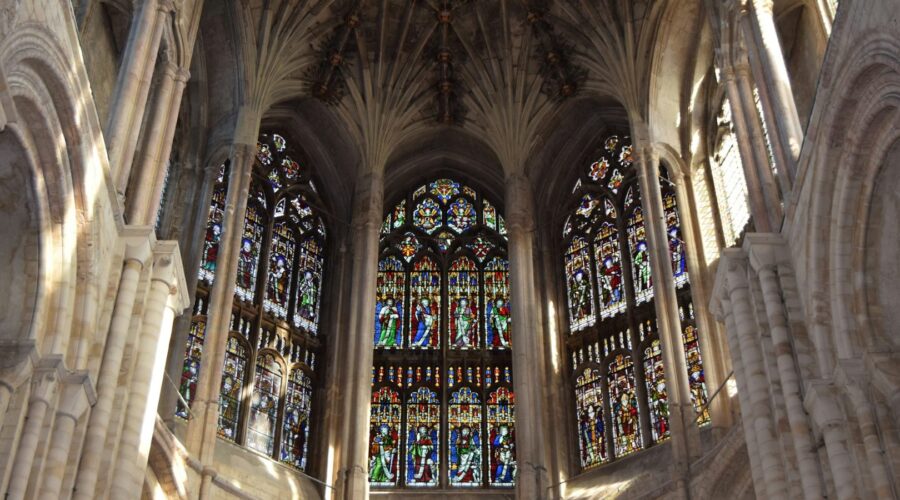
Destiny Worship Center: A Spiritual Haven Guided by Vision and Inclusivity
Introduction
Embark on a journey of spiritual awakening and inclusivity at Destiny Worship Center, a beacon of faith that has illuminated the hearts of its congregation for years. This blog post delves into the core values, ministries, and services that make Destiny Worship Center a vibrant and welcoming community for all.
The Vision Behind Destiny Worship Center
A Vision of Unity and Transformation
Destiny Worship Center was founded upon a vision to create a spiritual sanctuary where individuals from all walks of life could find solace, experience the transformative power of God, and embrace a life filled with purpose and destiny.
Core Values
- Love: Demonstrating unconditional love and acceptance towards all.
- Unity: Fostering a sense of community and belonging, regardless of differences.
- Excellence: Striving for excellence in all aspects of ministry and service.
- Discipleship: Nurturing spiritual growth and leading individuals into a deeper relationship with God.
li>Hope: Inspiring hope and empowering individuals to overcome challenges.
Ministries and Services
Vibrant Worship Services
Immerse yourself in the vibrant atmosphere of Destiny Worship Center’s weekly services, where the Spirit of God moves powerfully through dynamic worship, anointed preaching, and heartfelt prayer. Experience the presence of the divine and be uplifted in your spirit.
Engaging Bible Studies
Delve deeper into the Word of God through Destiny Worship Center’s engaging Bible studies. Explore the depths of scripture, gain insights into Christian principles, and apply Biblical teachings to your daily life. Grow in your knowledge and understanding of God’s Word.
Life-Transforming Discipleship
Unlock your full potential through Destiny Worship Center’s life-transforming discipleship programs. Receive mentorship, guidance, and support as you grow in your faith, overcome challenges, and discover God’s purpose for your life.
Community Outreach
Destiny Worship Center extends its reach beyond its walls through various community outreach initiatives. Volunteer opportunities, food drives, and community events create a positive impact, demonstrating the love of God in practical ways.
Inclusivity and Welcoming Environment
At Destiny Worship Center, inclusivity is not just a concept; it’s a lived reality. People from diverse backgrounds, cultures, and walks of life are welcomed with open arms and celebrated for their unique contributions. The church provides a safe and supportive environment where everyone feels valued and respected.
Prayer and Counsel
When life’s challenges arise, Destiny Worship Center offers a sanctuary of prayer and counsel. Dedicated prayer lines and compassionate pastors are available to provide spiritual guidance, support, and intercessory prayer. Find solace, encouragement, and wisdom as you navigate difficult times.
Events and Activities
Destiny Worship Center is a hub of activities and events designed to foster spiritual growth, fellowship, and community engagement. From conferences and workshops to social gatherings and recreational programs, there’s something for everyone to enjoy and connect with others.
Membership and Involvement
Becoming a member of Destiny Worship Center opens doors to a wealth of opportunities to grow and serve. Members participate in exclusive events, receive regular spiritual resources, and contribute to the vibrant community. Join the Destiny family and experience the fullness of God’s presence in your life.
Location and Contact Information
Destiny Worship Center is located at [Address] and can be contacted via phone at [Phone Number] or email at [Email Address]. Visit the church’s website at [Website Address] for more information about services, events, and membership.
Conclusion
Destiny Worship Center is more than just a church; it’s a spiritual haven where individuals can find acceptance, hope, and a sense of belonging. Guided by a vision of unity and transformation, the church offers a vibrant array of ministries, services, and activities that cater to the needs of all. Embrace the inclusive atmosphere, immerse yourself in the transformative power of God’s Word, and embark on a journey of spiritual growth and destiny at Destiny Worship Center.
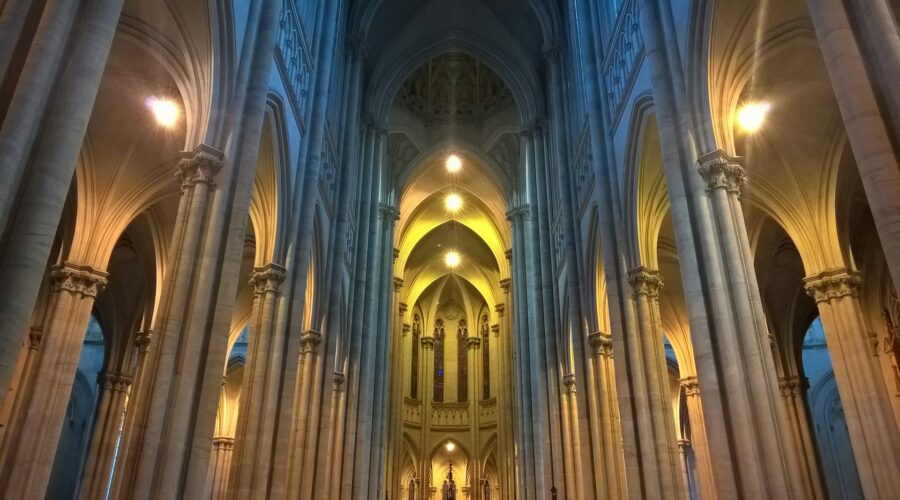
Sacred Heart Cathedral: A Spiritual and Architectural Masterpiece
The Sacred Heart Cathedral, nestled in the heart of Downtown Rochester, New York, is a stunning architectural masterpiece and a beacon of spiritual sustenance. Built in the late 19th century, this impressive cathedral is renowned for its exquisite Gothic Revival style and its rich history.
Historical Significance
The Sacred Heart Cathedral was conceived in response to the growing Catholic population in Rochester. Construction began in 1893, and the cathedral was dedicated in 1903. It was designed by renowned architect Edwin Forrest Durang, who also designed the New York City Bell Telephone Building and the Western Union Telegraph Building.
Architectural Marvel
The Sacred Heart Cathedral is a testament to the architectural prowess of its time. Its imposing facade features a magnificent rose window, intricate stone carvings, and two soaring spires that dominate the Rochester skyline.
Gothic Revival Style
The cathedral is a prime example of Gothic Revival architecture, which was a popular movement in the late 19th century. This style is characterized by its pointed arches, ribbed vaults, and intricate stained glass windows.
Key Features
- Length: 282 feet
- Width: 159 feet
- Height of Spires: 292 feet
- Number of Stained Glass Windows: 63
Spiritual Haven
Beyond its architectural splendor, the Sacred Heart Cathedral is a sacred space that has been a cornerstone of the Rochester Catholic community for over a century. It serves as the seat of the Diocese of Rochester and hosts a variety of religious services, including daily Mass, weddings, and baptisms.
The cathedral’s interior is equally impressive, with its soaring ceilings, marble columns, and intricate mosaics. The main altar is a masterpiece of craftsmanship, featuring a carved marble statue of the Sacred Heart of Jesus.
Music and Arts
The Sacred Heart Cathedral is also renowned for its vibrant music program. The cathedral choir is known for its exceptional performances, and the organ is one of the largest in the region.
The cathedral also hosts a variety of art exhibitions and installations. Its collection includes paintings, sculptures, and stained glass works by renowned artists.
Community Engagement
The Sacred Heart Cathedral is actively involved in the Rochester community. It hosts a food pantry, provides outreach services to the homeless, and offers educational programs for adults and children.
The cathedral is also a popular tourist destination, attracting visitors from around the world who marvel at its architectural beauty and rich history.
Tips for Visitors
If you plan to visit the Sacred Heart Cathedral, here are some tips to make the most of your experience:
- Guided Tours: Guided tours are available during the week and on Saturdays.
- Mass Schedule: Check the cathedral’s website for Mass times and other liturgical events.
- Respectful Attire: Please dress respectfully when visiting the cathedral.
- Photography: Photography is permitted outside the cathedral, but flash photography is not allowed inside.
Conclusion
The Sacred Heart Cathedral is a true gem of Rochester. Its architectural grandeur, rich history, and vibrant spiritual community make it a must-visit destination for both locals and tourists. Whether you are seeking spiritual enrichment or simply appreciate architectural beauty, this cathedral will leave a lasting impression on your heart and mind.
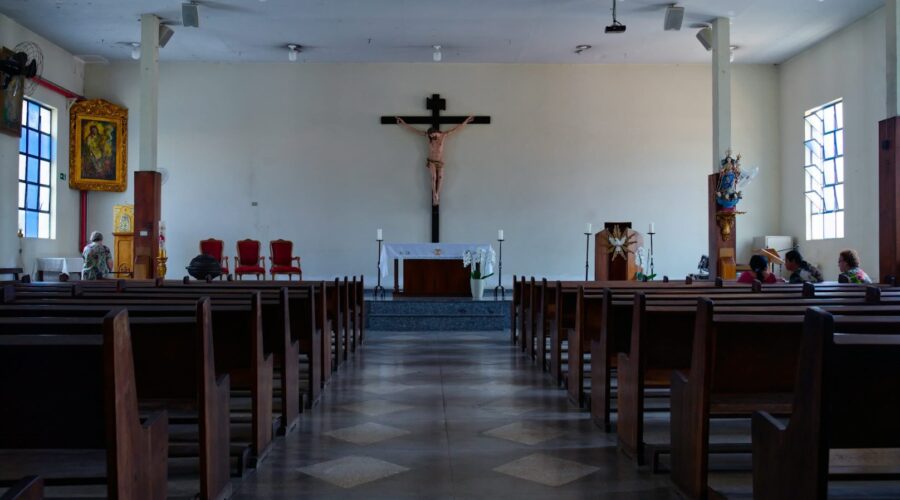
St Stephen’s Church: A Monument of History, Architecture, and Spirituality
Introduction
St Stephen’s Church is a magnificent ecclesiastical structure that has stood as a testament to faith, architectural ingenuity, and historical significance for centuries. This blog post will delve into the rich tapestry of this iconic church, exploring its architectural beauty, historical journey, and spiritual significance.
Architectural Splendor
St Stephen’s Church is renowned for its breathtaking architectural prowess. Built in the 12th century, it exhibits a harmonious blend of Norman and Gothic styles.
Norman Elements
- Rounded arches
- Massive columns
- Thick walls
- Semi-circular tower
Gothic Elements
- Pointed arches
- Ribbed vaults
- Large stained-glass windows
- Elaborate carvings
Historical Journey
St Stephen’s Church has witnessed a myriad of historical events over the centuries.
Medieval Period
- Construction began in the 12th century
- Served as a place of worship and refuge
- Alterations and additions made over time
Tudor Period
- Major renovations and extensions
- Stained-glass windows added
- Became the parish church of Westminster
Victorian Period
- Gothic Revival restoration in the 19th century
- New chancel and stained-glass windows
- Continued use as a parish church
Spiritual Significance
Beyond its architectural and historical significance, St Stephen’s Church holds immense spiritual importance.
Religious Services
- Regular services held
- Sunday services include Holy Communion
- Special services for festivals and events
Community Outreach
- Runs a soup kitchen for the homeless
- Offers counseling and support groups
- Engages in ecumenical and interfaith activities
Pilgrimage and Tourism
- A popular destination for pilgrims and tourists
- Offers guided tours and historical information
- A symbol of faith and heritage
Visiting Information
If you wish to experience the grandeur of St Stephen’s Church firsthand, here are some helpful details:
Location:
St Stephen’s Church
121 Marsham Street, Westminster
London SW1P 4LX
Opening Hours:
- Monday – Saturday: 10am – 5pm
- Sunday: 12pm – 4pm
Admission:
- Free entry
- Donations welcome
Accessibility:
- Accessible via step-free entrance
- Wheelchair accessible toilet
Conclusion
St Stephen’s Church is a masterpiece that seamlessly combines architectural brilliance, historical significance, and spiritual depth. Its enduring legacy as a place of worship, community, and pilgrimage stands as a testament to the enduring power of faith, heritage, and artistic achievement.
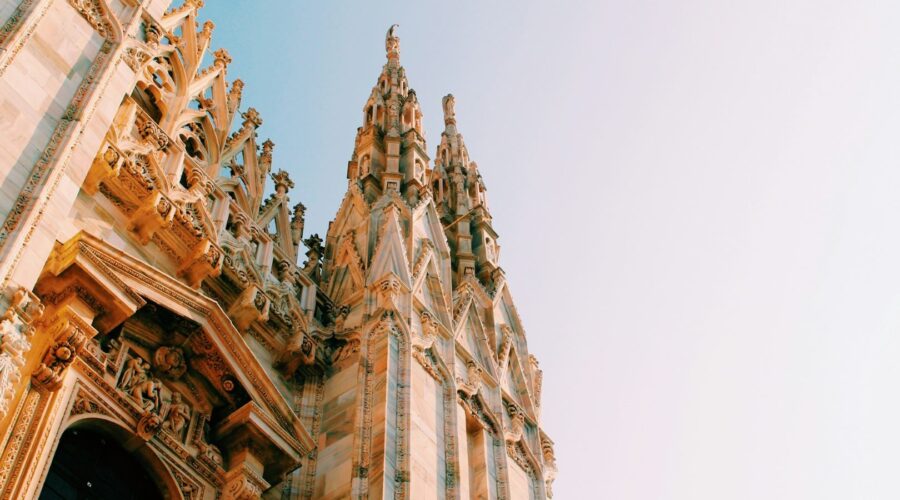
Welcome to New Birth Missionary Baptist Church: A Haven of Faith and Community
About New Birth Missionary Baptist Church
New Birth Missionary Baptist Church is a vibrant and welcoming community of believers located in [City, State]. Founded in [Year] by [Founder’s Name], our church has been a beacon of faith, hope, and spiritual growth for generations.
Our Mission and Values
- To spread the gospel of Jesus Christ and share His love with all.
- To create a nurturing environment where individuals can grow spiritually, emotionally, and intellectually.
- To serve our community through outreach programs and support services.
Our Beliefs
We adhere to the fundamental tenets of Baptist faith, including:
- The inerrancy and authority of the Bible.
- The salvation of sinners by grace alone through faith in Jesus Christ.
- The priesthood of all believers.
- The ordinances of baptism and communion.
Our Worship Services
Our worship services are uplifting and spiritually enriching experiences that include:
- Dynamic preaching and teaching.
- Inspirational music and singing.
- Prayer, meditation, and reflection.
- Food pantries and soup kitchens.
- Financial assistance and counseling.
- Youth programs and after-school activities.
- Senior Pastor: [Pastor’s Name]
- Associate Pastor: [Associate Pastor’s Name]
- Deacons and Deaconesses:
- [Names of Deacons and Deaconesses]
- Address: [Church Address]
- Phone: [Phone Number]
- Email: [Email Address]
- Website: [Website URL]
Our Community Involvement
We believe that the church is an integral part of the community. We are actively involved in various outreach programs, such as:
Our Ministries
We offer a wide range of ministries to cater to the diverse needs of our congregation, including:
Youth Ministry
Our youth ministry provides spiritual guidance, mentorship, and opportunities for youth to connect with God and each other.
Adult Ministry
Our adult ministry offers Bible study groups, discipleship classes, and social events to foster spiritual growth and fellowship.
Music Ministry
Our music ministry includes choirs, instrumental groups, and worship teams that lead our congregation in worship.
Missions Ministry
Our missions ministry supports local and international missionaries who are spreading the gospel and serving communities around the world.
Our Leadership
New Birth Missionary Baptist Church is led by a dedicated team of pastors and leaders, including:
Contact Us
For more information about New Birth Missionary Baptist Church, please contact us at:
Conclusion
New Birth Missionary Baptist Church is a welcoming and vibrant community of faith where individuals can connect with God, grow spiritually, and make a positive impact in the world. We invite you to join us for a worship service or any of our community events. Together, let us embark on a journey of faith and transformation.